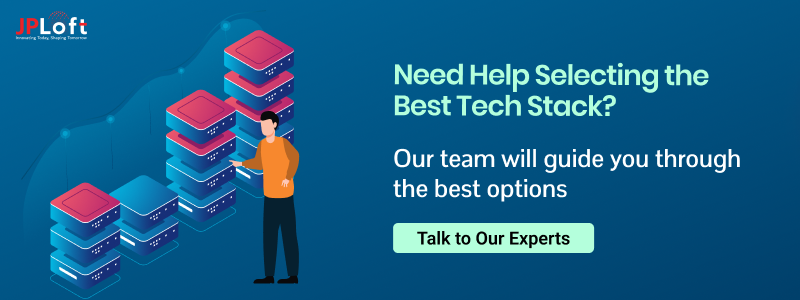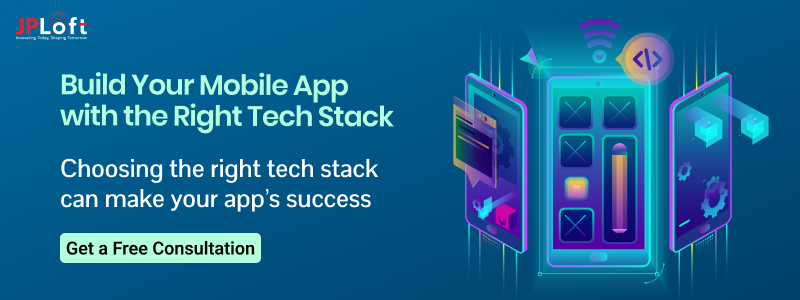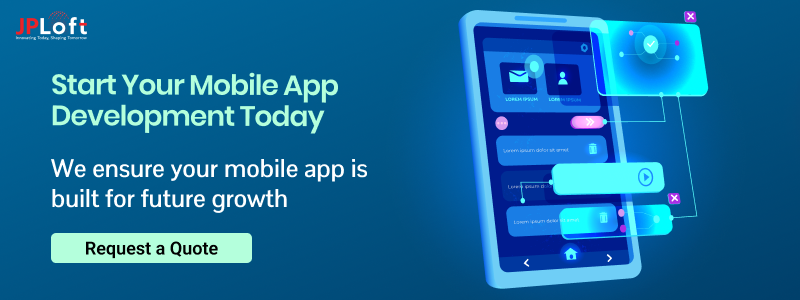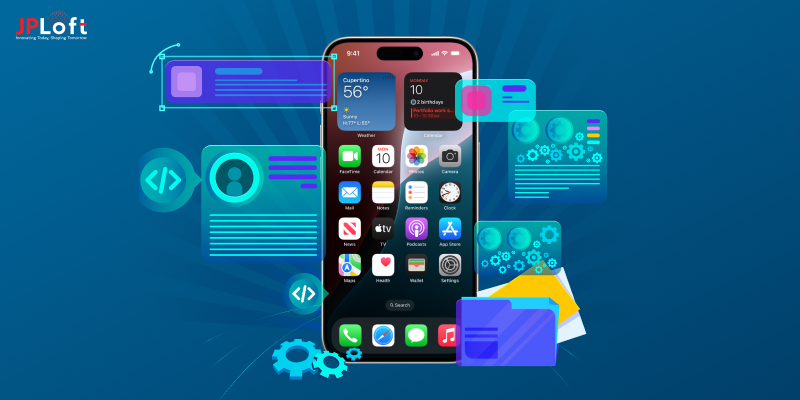The success of your mobile app heavily depends on its mobile app tech stack. It’s more than just tools; it’s the foundation that powers your app’s performance and scalability.
So, what is a technology stack for mobile app development? It’s the mix of programming languages, frameworks, and tools used to build both the frontend and backend of your app.
Choosing the right tech stack for mobile apps is key to ensuring compatibility, efficiency, and a seamless user experience.
Whether you’re developing a basic app or a complex platform, your mobile app development technologies will shape the final product. A good stack means better performance and happier users.
In this guide, we’ll break down everything you need to know about the mobile app tech stack. From frontend and backend tools to cross-platform frameworks, we’ll help you make informed decisions.
Ready to build your dream app? Let’s dive in!
What is a Mobile App Tech Stack?
A mobile app tech stack is the set of technologies, tools, and frameworks used to build an app. It includes everything from the programming languages to the libraries and platforms needed for development.
Think of it as the “recipe” for your app. Just like a good recipe ensures a delicious meal, the right technology stack for mobile app development ensures your app is robust, fast, and reliable.
A tech stack typically consists of two main parts:
-
Frontend: The part users interact with.
-
Backend: The server-side that manages data and functionality.
Choosing the right mobile app development technologies depends on factors like app complexity, target audience, and platform (iOS, Android, or both).
For example, a simple app might require a basic stack, while an e-commerce app would need advanced frameworks and tools.
Why Does Your Mobile App’s Tech Stack Matter?
Your mobile app tech stack isn’t just a technical decision, it directly impacts your app’s success. From performance to scalability, the right stack lays the foundation for everything.
Here’s why it matters:
-
App Performance: A well-chosen technology stack for mobile app development ensures your app runs smoothly, even during high traffic.
-
Scalability: As your app grows, a strong tech stack helps it handle increasing users and features without breaking.
-
Development Speed: The right tools and frameworks allow your developers to work efficiently, saving time and cost.
-
User Experience: A proper frontend stack ensures your app is visually appealing and responsive, while the backend supports smooth functionality.
A poorly chosen stack could lead to high maintenance costs, performance issues, or even app failure. That’s why selecting the right mobile app development technologies is crucial from the start.
Key Components of a Mobile App Tech Stack
Choosing the right mobile app tech stack is like building a house, you need a strong foundation, the right materials, and efficient tools to ensure durability and performance.
A mobile app’s tech stack is divided into several components, each playing a crucial role in the app’s overall functionality, security, and scalability.
|
Category |
Description |
Popular Tools/Technologies |
Why It's Important |
|
Frontend (User Interface) |
Handles user interaction and design elements of the app. |
Swift, Kotlin, React Native, Flutter |
Ensures a smooth and visually appealing user experience. |
|
Backend (Server-Side) |
Manages server-side logic, APIs, and data processing. |
Node.js, Python, Java, Ruby on Rails |
Handles app logic and supports functionalities like user management and data processing. |
|
Cross-Platform Development |
Frameworks for building apps that work on both iOS and Android platforms. |
React Native, Flutter, Xamarin |
Reduces development time and cost by enabling cross-platform compatibility. |
|
Payment Gateway Integration |
Integrates secure payment methods for online transactions. |
Stripe, PayPal, Razorpay, Square |
Provides secure and seamless payment methods for users. |
|
Push Notifications |
Enables real-time notifications for better user engagement. |
Firebase Cloud Messaging, OneSignal |
Improves user engagement by delivering timely updates and alerts. |
|
Cloud Hosting Services |
Provides cloud-based hosting and storage for scalability. |
AWS, Google Cloud, Microsoft Azure |
Supports scalability and ensures app uptime during heavy traffic. |
|
Database Management |
Manages and stores app data, ensuring reliability and speed. |
PostgreSQL, MongoDB, MySQL, Firebase |
Ensures data integrity and fast retrieval for a better user experience. |
|
Testing Frameworks |
Frameworks and tools for debugging and ensuring app quality. |
Appium, Selenium, TestFlight, XCTest |
Helps identify and resolve issues before app release. |
|
Analytics and Monitoring |
Tools to monitor app performance and user behavior. |
Google Analytics, Mixpanel, Firebase Analytics |
Tracks app performance and user behavior for data-driven improvements. |
|
Security and Authentication |
Implements security protocols like encryption and user authentication. |
OAuth, JWT, SSL/TLS Encryption, Biometric Authentication |
Protects user data and prevents unauthorized access. |
Let’s break it down into Frontend, Backend, Database, APIs, and Hosting.
1. Frontend (User Interface & Experience)
The frontend is what users interact with, buttons, screens, animations, and overall design. A well-optimized frontend ensures smooth performance, fast load times, and a seamless user experience.
► Tech Stack for Frontend Development:
(i) Native Apps:
-
-
iOS: Swift, Objective-C, SwiftUI
-
Android: Kotlin, Java, Jetpack Compose
-
(ii) Cross-Platform Apps:
-
-
React Native (JavaScript-based, widely used for startups)
-
Flutter (Dart-based, Google-supported framework)
-
Xamarin (Microsoft-backed, C# framework)
-
(iii) Hybrid & Web-Based Apps:
-
-
Ionic, Cordova, Progressive Web Apps (PWAs)
-
Pro Tip: If you’re building a high-performance app like a gaming or AR-based application, native technologies (Swift, Kotlin) are the best choices. However, if you want cost-effective, cross-platform solutions, React Native or Flutter can be a great pick.
2. Backend (Server-Side Development & Business Logic)
While the frontend is about how an app looks, the backend ensures everything runs smoothly behind the scenes. It handles user authentication, data storage, security, and app logic.
► Backend Programming Languages & Frameworks:
-
Node.js: Fast, scalable, JavaScript-based backend
-
Python (Django, Flask): Great for AI-driven and data-heavy apps
-
Ruby on Rails: Rapid development, ideal for MVPs
-
Java (Spring Boot): Secure and stable for enterprise-level apps
-
PHP (Laravel, CodeIgniter): Traditional backend for web + mobile apps
Pro Tip: If your app needs real-time data processing (like ride-hailing or messaging apps), Node.js is an excellent choice due to its event-driven, non-blocking architecture.
3. Database (Data Storage & Management)
Every mobile app requires a reliable database to store and retrieve data efficiently. The choice depends on app size, complexity, and scalability requirements.
► Popular Mobile App Databases:
|
Database |
Type |
Best For |
|
PostgreSQL |
SQL |
Complex, structured data with high security |
|
MySQL |
SQL |
General-purpose database, widely supported |
|
MongoDB |
NoSQL |
Large-scale, unstructured data storage |
|
Firebase Firestore |
NoSQL |
Real-time syncing, great for chat & social apps |
|
SQLite |
SQL |
Lightweight, used for offline apps |
|
Redis |
In-memory |
Fast caching & session storage |
Pro Tip: If your app requires offline mode, consider SQLite or Firebase Firestore, which provide seamless data syncing when connectivity is restored.
4. APIs & Third-Party Integrations
APIs (Application Programming Interfaces) help your app communicate with external services like payment gateways, authentication, and analytics.
► Commonly Used APIs & SDKs:
-
Authentication & User Management: Firebase Auth, OAuth, Auth0
-
Payment Processing: Stripe, PayPal, Razorpay, Braintree
-
Maps & Location Services: Google Maps API, Mapbox, OpenStreetMap
-
Push Notifications: Firebase Cloud Messaging (FCM), OneSignal, Apple Push Notification Service (APNs)
-
Analytics & Crash Reporting: Google Analytics, Mixpanel, Sentry
Pro Tip: Instead of building everything from scratch, leverage pre-built APIs to save development time and reduce costs.
5. Cloud & Hosting Services (Where Your App Lives)
To keep an app running smoothly, it needs cloud infrastructure for hosting, storage, and scalability.
► Popular Cloud Platforms for Mobile Apps:
|
Platform |
Best For |
|
AWS (Amazon Web Services) |
Scalable cloud infrastructure, used by enterprises |
|
Google Firebase |
Backend-as-a-Service (BaaS) for fast MVP development |
|
Microsoft Azure |
Secure cloud services for enterprise apps |
|
DigitalOcean |
Simple, cost-effective cloud hosting |
|
Heroku |
Great for startups, easy deployment |
Pro Tip: If your app is data-heavy and requires real-time syncing, consider Firebase for quick deployment or AWS for enterprise-level solutions.
The right mobile app tech stack ensures performance, scalability, and security. Your choices should depend on:
- App Type (Native, Cross-Platform, Hybrid)
- Performance Needs (Gaming, AI, IoT, etc.)
- Budget Constraints
- Future Scalability
The next step? Comparing native vs. cross-platform vs. hybrid tech stacks, let’s break it down!
Native vs. Cross-Platform vs. Hybrid – Tech Stack Breakdown
Choosing between native, cross-platform, and hybrid mobile app development is a crucial decision that affects performance, cost, scalability, and user experience.
Let’s break down the pros, cons, and best tech stacks for each approach.
|
Feature |
Native Apps |
Cross-Platform Apps |
Hybrid Apps |
|
Performance |
✅ Best |
⚡ Good |
❌ Average |
|
Development Cost |
❌ High |
✅ Moderate |
✅ Low |
|
Time to Market |
❌ Longer |
✅ Faster |
✅ Fastest |
|
Code Reusability |
❌ None (separate for iOS & Android) |
✅ High |
✅ High |
|
Device Feature Access |
✅ Full |
⚡ Partial |
❌ Limited |
|
Best For |
High-performance apps, AR/VR, fintech |
Startups, MVPs, eCommerce |
Content apps, news apps |
Most Popular Mobile App Tech Stacks (With Examples)
The right mobile app tech stack can make or break your app’s success.
Some of the world’s top mobile apps rely on proven tech stacks that offer speed, scalability, and a smooth user experience.
Here’s a breakdown of the most popular tech stacks used by successful mobile apps across different industries.
A] Native Tech Stacks – High Performance & Security
Native development ensures superior speed, smooth animations, and deep hardware access. Companies that prioritize performance choose native stacks.
► Examples of Native Tech Stacks:
|
App |
Platform |
Tech Stack |
|
|
iOS & Android |
Swift (iOS), Kotlin (Android) |
|
Spotify |
iOS & Android |
Swift, Kotlin, Java |
|
Uber |
iOS & Android |
Swift, Kotlin, Node.js for backend |
|
|
iOS & Android |
Erlang, Java, SQLite for messaging |
|
TikTok |
iOS & Android |
Swift, Kotlin, Python for backend |
B] Cross-Platform Tech Stacks – Fast & Cost-Effective
Cross-platform development allows businesses to write once, run everywhere, reducing time and cost while maintaining performance.
► Examples of Cross-Platform Tech Stacks:
|
App |
Tech Stack |
Why? |
|
|
React Native |
Code reusability, fast UI updates |
|
Airbnb |
React Native |
Fast iteration, scalability |
|
Alibaba |
Flutter |
Rich UI, smooth animations |
|
Google Ads |
Flutter |
Performance with cross-platform benefits |
|
Skype |
Xamarin |
Microsoft ecosystem compatibility |
C] Backend Tech Stacks – Powering the Logic & Data
A strong backend tech stack ensures fast processing, scalability, and seamless data management.
► Examples of Backend Tech Stacks:
|
App |
Backend Tech Stack |
Why? |
|
Netflix |
Node.js, Java |
Handles high-volume streaming |
|
Uber |
Node.js, Go, Python |
Real-time processing & scalability |
|
|
Python, Ruby on Rails |
Performance at scale |
|
|
Django (Python) |
Simple, fast backend for social apps |
|
PayPal |
Node.js, Java |
Secure financial transactions |
Database Tech Stacks – Storing & Managing Data
Databases handle everything from user profiles to transactions. The right choice ensures fast data retrieval, security, and scalability.
► Examples of Database Tech Stacks:
|
App |
Database Used |
Why? |
|
|
SQLite, MySQL |
Lightweight, fast messaging storage |
|
|
MySQL, MariaDB |
Handles billions of users efficiently |
|
YouTube |
Bigtable (Google) |
Manages large-scale video data |
|
|
PostgreSQL, Redis |
Fast processing for high-volume tweets |
|
Amazon |
DynamoDB |
Scalable for eCommerce transactions |
D] Cloud & Hosting Tech Stacks – Where Your App Lives
Hosting services ensure your app is always available, scalable, and secure.
► Popular Cloud Platforms Used by Top Apps:
|
App |
Cloud Service |
Why? |
|
Netflix |
AWS |
High scalability & low downtime |
|
Dropbox |
Google Cloud |
Secure data storage |
|
|
AWS |
Handles millions of daily users |
|
TikTok |
Oracle Cloud |
Data compliance & speed |
|
Zoom |
Azure |
Reliable video conferencing |
Now that we’ve covered the most widely used tech stacks, let’s move on to the next section, How to Choose the Best Tech Stack for Your Mobile App.
How to Choose the Best Tech Stack for Your Mobile App
Selecting the right mobile app tech stack is a critical decision that influences performance, scalability, cost, and maintenance.
The wrong choice can lead to slow load times, security vulnerabilities, and difficulties in scaling.
Here’s a structured approach to choosing the best technology stack for your mobile app.
1. Define Your Business Goals and App Requirements
The tech stack should align with your business model, target audience, and app functionality. Consider:
-
Type of App: Gaming, eCommerce, social media, fintech, enterprise solutions
-
Target Platforms: iOS, Android, both, or web
-
Scalability Needs: Will the app handle millions of users in the future?
-
Security Requirements: Does the app handle sensitive data like payments or personal health information?
If your app involves high-performance tasks like AR, VR, or real-time processing, a native tech stack is recommended. For faster development and lower costs, a cross-platform approach may work better.
2. Consider the Development Speed and Cost
Development costs vary depending on the tech stack. Native development is more expensive but delivers superior performance, while cross-platform frameworks reduce cost but may limit functionality.
-
Fast MVP Development: React Native, Flutter
-
Enterprise-Grade Security and Performance: Swift (iOS), Kotlin (Android)
-
Budget Constraints: Hybrid apps using Ionic or Cordova
-
Custom Backend Needs: Node.js, Django, Ruby on Rails
If time-to-market is a priority, choosing a framework with pre-built components and reusable code can speed up the process.
3. Assess Performance and Scalability Needs
If your app requires real-time interactions, live streaming, or high-volume transactions, the tech stack should be optimized for speed and reliability.
-
High-performance applications: Native development (Swift, Kotlin)
-
Apps needing real-time updates: Firebase, WebSockets, Node.js
-
Scalable cloud solutions: AWS, Google Cloud, Microsoft Azure
A poorly chosen backend or database can cause latency issues and crashes, especially when scaling to more users.
4. Evaluate Security and Compliance
Security is crucial, especially for finance, healthcare, and enterprise applications. A secure tech stack must support:
-
Data encryption: Secure Socket Layer (SSL), AES encryption
-
Authentication: OAuth, Firebase Authentication, JWT
-
Compliance Standards: GDPR, HIPAA, PCI-DSS for payment processing
-
Secure APIs: RESTful API design with authentication and encryption
A weak tech stack can lead to data breaches, financial fraud, and user trust issues. Choosing frameworks and cloud services with built-in security features helps mitigate risks.
5. Check for Community Support and Long-Term Maintenance
A strong developer community ensures:
-
Frequent updates and security patches
-
Availability of libraries and plugins
-
Better documentation and debugging support
Popular frameworks like React Native, Flutter, and Node.js have large developer communities, making maintenance and future upgrades easier.
If the tech stack is niche or outdated, finding developers for long-term support can be difficult.
6. Review Third-Party Integrations and APIs
Most mobile apps rely on third-party services for:
-
Payment processing: Stripe, PayPal, Razorpay
-
Push notifications: Firebase Cloud Messaging, OneSignal
-
Analytics and tracking: Google Analytics, Mixpanel
-
Geolocation services: Google Maps API, Mapbox
Choosing a tech stack that seamlessly integrates with these services ensures better functionality without additional development effort.
7. Consider Future Trends and Emerging Technologies
With advancements in mobile technology, new frameworks and architectures are reshaping the industry.
-
AI & Machine Learning: TensorFlow, Core ML, OpenAI APIs
-
Augmented & Virtual Reality: ARKit (iOS), ARCore (Android)
-
5G and Edge Computing: Optimized cloud services and APIs
-
Blockchain for Secure Transactions: Hyperledger, Ethereum APIs
A future-proof tech stack ensures the app remains relevant and adaptable to new innovations.
Now that we’ve outlined how to choose the best mobile app tech stack, let’s explore cost factors and how different tech stacks impact development expenses.
Cost of Developing a Mobile App Based on Tech Stack
The cost of mobile app development varies significantly based on the chosen tech stack, app complexity, platform, and additional integrations.
Each component of the tech stack, frontend, backend, database, APIs, and hosting, adds to the total development expense.
Let’s break down the cost based on different factors and tech stack choices.
A] Cost Breakdown by Development Approach
The first factor to consider is development. SO here’s what mobile app development cost looks like:
|
Development Approach |
Estimated Cost |
Best For |
|
Native Development (iOS/Android) |
$50,000 – $300,000+ |
High-performance, feature-rich apps |
|
Cross-Platform Development (React Native, Flutter) |
$30,000 – $150,000 |
Startups, MVPs, general-purpose apps |
|
Hybrid Development (Ionic, Cordova) |
$20,000 – $100,000 |
Basic business apps, web-first applications |
|
Progressive Web Apps (PWAs) |
$10,000 – $50,000 |
Web-focused applications with mobile capabilities |
-
Native development costs more because it requires separate codebases for iOS and Android.
-
Cross-platform development reduces costs but may have limitations in performance.
-
Hybrid and PWA solutions are cost-effective but may not offer the best user experience.
B] Cost Based on Backend & Database Choices
|
Backend Stack |
Estimated Cost |
Best For |
|
Node.js + Firebase |
$10,000 – $80,000 |
Startups, real-time apps |
|
Django + PostgreSQL |
$20,000 – $100,000 |
Data-driven, AI-integrated apps |
|
Spring Boot + MySQL |
$30,000 – $150,000 |
Enterprise applications |
|
Ruby on Rails + MongoDB |
$25,000 – $120,000 |
SaaS, web & mobile hybrid apps |
-
Serverless solutions like Firebase reduce backend costs but may have scalability limits.
-
Relational databases (MySQL, PostgreSQL) work well for structured data, while NoSQL (MongoDB, Firebase) is better for flexible, real-time applications.
C] Cost of Third-Party API & Feature Integrations
|
Feature |
Technology Used |
Estimated Cost |
|
User Authentication |
Firebase Auth, OAuth, JWT |
$1,000 – $5,000 |
|
Payment Gateway |
Stripe, PayPal, Razorpay |
$5,000 – $20,000 |
|
Push Notifications |
Firebase Cloud Messaging, OneSignal |
$1,000 – $3,000 |
|
Geolocation Services |
Google Maps API, Mapbox |
$3,000 – $10,000 |
|
Chat & Messaging |
Twilio, WebSockets, Firebase Realtime Database |
$10,000 – $50,000 |
|
AI & Machine Learning |
TensorFlow, OpenAI, Core ML |
$15,000 – $100,000 |
The more integrations an app requires, the higher the development cost.
D] Cost of Cloud Hosting & Maintenance
|
Cloud Hosting Provider |
Estimated Monthly Cost |
Best For |
|
AWS (Amazon Web Services) |
$100 – $10,000+ |
Scalable, enterprise apps |
|
Google Cloud (Firebase, BigQuery) |
$50 – $5,000+ |
Startups, real-time apps |
|
Microsoft Azure |
$200 – $10,000+ |
Enterprise-grade security |
|
DigitalOcean / Heroku |
$10 – $1,000+ |
Small-scale apps, MVPs |
Cloud hosting costs depend on traffic volume, storage, and real-time processing needs.
-
For startups, Firebase is a budget-friendly choice but may have scaling limitations.
-
AWS and Google Cloud offer high-performance hosting but at a premium cost.
E] Hidden Costs in Mobile App Development
Beyond the initial development, there are additional costs that businesses must consider.
|
Hidden Cost Factor |
Estimated Annual Cost |
|
App Maintenance & Updates |
$10,000 – $100,000 |
|
App Store & Google Play Fees |
$99/year (iOS), $25 one-time (Android) |
|
Security & Compliance Audits |
$5,000 – $50,000 |
|
Performance Optimization & Bug Fixes |
$5,000 – $50,000 |
Ignoring maintenance costs can lead to poor app performance, security risks, and a loss of user trust.
Now that we’ve covered development costs, the next section will explore essential and advanced features every mobile app should have.
How JPLoft Can Help You Build a Scalable Mobile App
Developing a mobile app requires more than just coding, it demands the right tech stack, performance optimization, security measures, and seamless user experience. At your mobile App development company, we specialize in building high-performance mobile applications tailored to your business needs.
Whether you need a native, cross-platform, or hybrid app, our expert team ensures:
- Strategic tech stack selection for speed, scalability, and efficiency
- Custom features to match your industry needs
- Secure backend infrastructure with cloud integration
- Ongoing support & app maintenance for long-term success
If you're looking for a trusted mobile app development company, let’s discuss how we can bring your app idea to life. Get in touch with us today!
Conclusion
Choosing the right mobile app tech stack is crucial for building a high-performing, secure, and scalable application. Every app has different needs, and the right technology selection depends on business goals, budget, and performance expectations.
-
Native development is best for speed and efficiency.
-
Cross-platform solutions provide cost-effectiveness and faster development.
-
The backend, database, and third-party integrations impact scalability and security.
By prioritizing essential features, selecting the right technologies, and focusing on scalability, you can build a mobile app that delivers a seamless user experience and long-term growth.
If you need expert guidance on choosing the right tech stack for your app, reach out to JPLoftfor a free consultation.
FAQs
A mobile app tech stack is a combination of frontend, backend, database, and cloud services used to develop a mobile application. It defines how the app functions, performs, and scales.
Consider app complexity, performance needs, scalability, security, and budget when selecting a tech stack. Native development (Swift, Kotlin) is ideal for performance, while cross-platform frameworks (React Native, Flutter) save time and costs.
For startups, a cross-platform tech stack like React Native or Flutter is cost-effective, allowing development for both iOS and Android using a single codebase. Firebase and Node.js are popular backend choices for quick deployment.
It depends on the app's needs:
Node.js for real-time apps (chat, rideshare, gaming)
Django (Python) for AI-driven or data-heavy applications
Spring Boot (Java) for enterprise-level security
Firebase for startups needing a serverless backend
Native apps (Swift for iOS, Kotlin for Android) offer better performance and security but require separate codebases.
Cross-platform apps (React Native, Flutter) allow code reuse across iOS & Android, making them cost-effective but slightly less optimized than native apps.
Native apps: $50,000 – $300,000+
Cross-platform apps: $30,000 – $150,000
Hybrid apps: $20,000 – $100,000
Basic MVPs: $10,000 – $50,000
The final cost depends on features, backend infrastructure, integrations, and maintenance.
AI & Machine Learning integration for automation and personalization
5G technology for faster app performance
Serverless architecture for scalable, cost-efficient backends
Blockchain-based security for fintech and secure transactions
Yes, butchanging the tech stack post-development can be expensive and time-consuming. It’s best to plan ahead and select the right stack from the beginning.
PostgreSQL & MySQL for structured data
MongoDB & Firebase for real-time, NoSQL storage
SQLite for lightweight, offline apps
DynamoDB for scalable cloud storage
Our team provides end-to-end mobile app development, from tech stack selection and custom feature integration to backend development, cloud hosting, and post-launch maintenance. Contact us today to get started on your app!















Share this blog